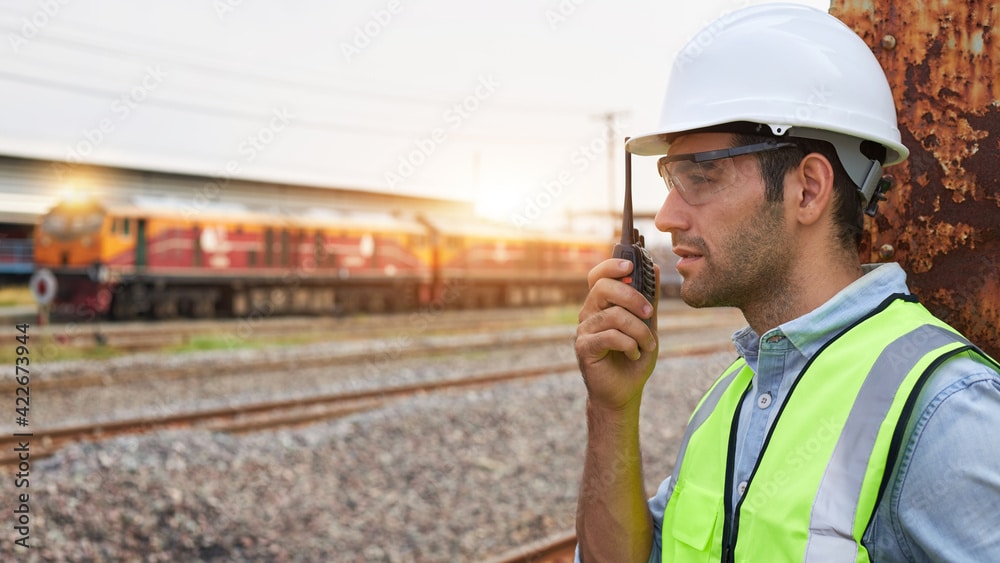The range of railway walkie-talkies, which are crucial for effective communication within railway operations, varies significantly based on several factors. These devices are designed to facilitate clear and reliable communication among train conductors, engineers, and other railway staff, ensuring safety and efficiency in operations. Understanding the range of these devices involves considering aspects such as technology, environment, and frequency bands used.
Contents
Railway walkie-talkie Key Factors Affecting the Range
Technology and Power Output:
Modern railway walkie-talkies often use digital technology, which typically provides better range and clearer communication compared to analog devices. The power output of the walkie-talkie, measured in watts, is a critical factor. Higher power outputs generally mean a longer range. For instance, a walkie-talkie with a 5-watt output will usually have a greater range than one with a 1-watt output.
Frequency Bands:
Railway walkie-talkies typically operate on specific frequency bands, such as VHF (Very High Frequency) and UHF (Ultra High Frequency). VHF frequencies, which range from 30 MHz to 300 MHz, are known for their longer range in open areas and better performance over long distances. UHF frequencies, ranging from 300 MHz to 3 GHz, are better suited for urban environments with many obstacles like buildings and tunnels, as they can penetrate these barriers more effectively.
Environmental Factors:
The surrounding environment significantly impacts the range of railway walkie-talkies. In open rural areas, these devices can achieve their maximum potential range because there are fewer obstacles to impede the signal. Conversely, in urban areas with numerous buildings, tunnels, and other structures, the range can be significantly reduced due to signal attenuation and reflection. Additionally, weather conditions such as heavy rain or snow can also affect the signal strength and thereby reduce the range.
Antenna Quality:
The quality and type of the antenna used with the walkie-talkie also play a crucial role in determining the range. High-gain antennas can significantly enhance the range by focusing the radio signal in a specific direction, while low-gain antennas provide a more omnidirectional coverage but with a shorter range.
Battery Life and Usage:
The battery life of the walkie-talkie can affect its range, particularly if the device is used extensively over long periods. A fully charged battery ensures the walkie-talkie operates at optimal power, thereby maximizing its range. However, as the battery depletes, the power output may reduce, leading to a shorter communication range.
Typical Range Estimates
The range of railway walkie-talkies can vary widely based on the aforementioned factors. Typically, these devices can achieve a range of:
Rural/Open Areas:
In ideal conditions with minimal obstructions, railway walkie-talkies can have a range of up to 5 to 10 miles (8 to 16 kilometers). This makes them particularly effective for use in open countryside where trains may travel long distances without significant interference.
Urban Areas:
In cities or densely populated areas with many buildings and structures, the range is usually reduced to between 1 to 3 miles (1.6 to 4.8 kilometers). The numerous obstacles in such environments absorb and reflect the radio signals, leading to a shorter effective range.
Inside Tunnels and Buildings:
Within tunnels and large buildings, the range can be even more limited. To counter this, railway systems often install repeater stations or use dedicated communication systems within tunnels to ensure continuous coverage.
Enhancements and Modern Solutions
To overcome range limitations, modern railway communication systems often integrate repeaters, which amplify the signal and extend the range. These repeaters can be strategically placed along the railway lines, especially in areas with known signal obstructions like tunnels or dense urban sections. Additionally, some railways employ digital communication systems such as GSM-R (Global System for Mobile Communications – Railway), which provides a more extensive and reliable communication network specifically designed for railway operations.
In conclusion, the range of railway walkie-talkies is influenced by a multitude of factors including technology, frequency, environmental conditions, antenna quality, and battery life. Understanding these variables helps railway operators optimize their communication systems to ensure safety and efficiency across their networks. While typical ranges can vary from 1 to 10 miles depending on the environment, modern advancements and supplementary technologies continue to enhance the reliability and reach of railway communication systems.
